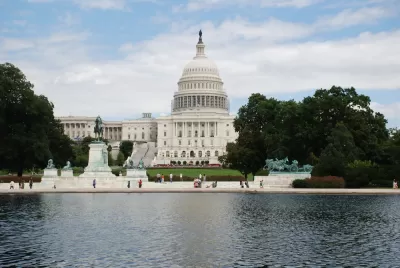A couple of questions are fundamental to the debate about the housing affordability crisis.

[Updated: August 19, 2019]
An article by Solomon Greene raises the question of whether deregulation can solve the affordable housing crisis, and, more specifically, whether the federal government can play a hand in that deregulation.
The Trump administration is making at least initial gestures toward trying to do just that. In June, President Donald Trump signed an executive order establishing the "White House Council on Eliminating Regulatory Barriers to Affordable Housing." Democratic candidates for president are also pushing for fewer regulations as one tool for combating the rising costs of housing. The New York Times Editorial Board yesterday announced its support published an editorial supporting the idea of more construction as one potential solution to housing affordability.
"This embrace of deregulation merits particular praise because the states most resistant to allowing housing construction are the strongholds of the Democratic Party, in the Northeast and along the Pacific Coast, and the most resistant voters are the wealthy residents of those states who provide so much of the funding for Democratic presidential campaigns," according to the editorial.
Returning to the earlier article, Solomon builds a case that the federal government has multiple avenues by which it can influence the housing market, including subsidies, ending or prohibiting exclusionary barriers, identifying the helpful regulations among the harmful, and supporting bottom-up initiatives. On that last point, Solomon writes:
Effective policies will also require a strong emphasis on community engagement from the outset, and ongoing monitoring of implementation and evaluation of outcomes. The federal government used this model under the Sustainable Communities Initiative and began to apply it more broadly through the US Department of Housing and Urban Development’s Affirmatively Furthering Fair Housing rule before Secretary Carson suspended its implementation. Mining lessons from each of these efforts will be key to the success of new initiatives.
FULL STORY: Can We Deregulate Ourselves out of the Affordable Housing Crisis?

Study: Maui’s Plan to Convert Vacation Rentals to Long-Term Housing Could Cause Nearly $1 Billion Economic Loss
The plan would reduce visitor accommodation by 25,% resulting in 1,900 jobs lost.

Alabama: Trump Terminates Settlements for Black Communities Harmed By Raw Sewage
Trump deemed the landmark civil rights agreement “illegal DEI and environmental justice policy.”

Why Should We Subsidize Public Transportation?
Many public transit agencies face financial stress due to rising costs, declining fare revenue, and declining subsidies. Transit advocates must provide a strong business case for increasing public transit funding.

Paris Bike Boom Leads to Steep Drop in Air Pollution
The French city’s air quality has improved dramatically in the past 20 years, coinciding with a growth in cycling.

Why Housing Costs More to Build in California Than in Texas
Hard costs like labor and materials combined with ‘soft’ costs such as permitting make building in the San Francisco Bay Area almost three times as costly as in Texas cities.

San Diego County Sees a Rise in Urban Coyotes
San Diego County experiences a rise in urban coyotes, as sightings become prevalent throughout its urban neighbourhoods and surrounding areas.
Urban Design for Planners 1: Software Tools
This six-course series explores essential urban design concepts using open source software and equips planners with the tools they need to participate fully in the urban design process.
Planning for Universal Design
Learn the tools for implementing Universal Design in planning regulations.
Smith Gee Studio
Alamo Area Metropolitan Planning Organization
City of Santa Clarita
Institute for Housing and Urban Development Studies (IHS)
City of Grandview
Harvard GSD Executive Education
Toledo-Lucas County Plan Commissions
Salt Lake City
NYU Wagner Graduate School of Public Service





























